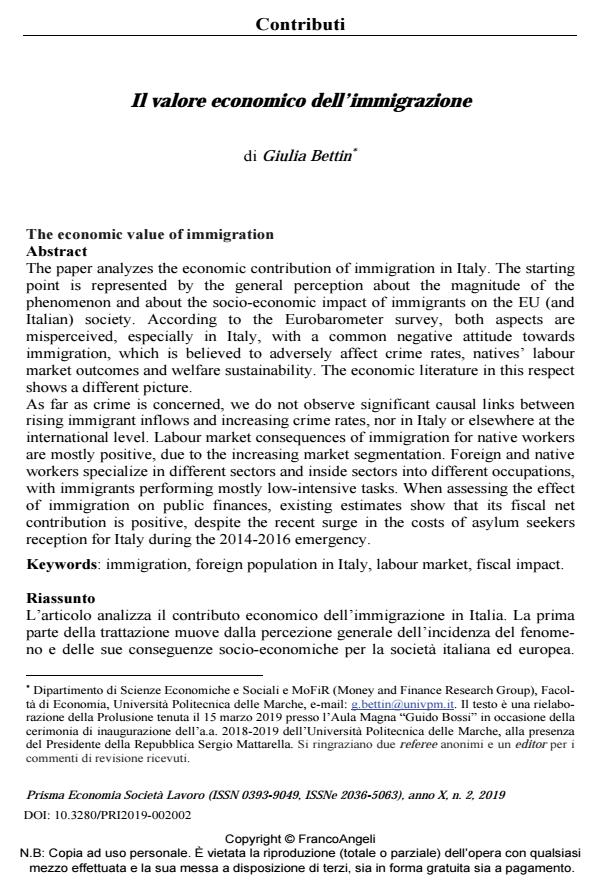The economic value of immigration
Journal title PRISMA Economia - Società - Lavoro
Author/s Giulia Bettin
Publishing Year 2020 Issue 2019/2
Language Italian Pages 19 P. 12-30 File size 282 KB
DOI 10.3280/PRI2019-002002
DOI is like a bar code for intellectual property: to have more infomation
click here
Below, you can see the article first page
If you want to buy this article in PDF format, you can do it, following the instructions to buy download credits

FrancoAngeli is member of Publishers International Linking Association, Inc (PILA), a not-for-profit association which run the CrossRef service enabling links to and from online scholarly content.
The paper analyzes the economic contribution of immigration in Italy. The starting point is represented by the general perception about the magnitude of the phenomenon and about the socio-economic impact of immigrants on the EU (and Italian) society. According to the Eurobarometer survey, both aspects are misperceived, especially in Italy, with a common negative attitude towards immigration, which is believed to adversely affect crime rates, natives’ labour market outcomes and welfare sustainability. The economic literature in this respect shows a different picture. As far as crime is concerned, we do not observe significant causal links between rising immigrant inflows and increasing crime rates, nor in Italy or elsewhere at the international level. Labour market consequences of immigration for native workers are mostly positive, due to the increasing market segmentation. Foreign and native workers specialize in different sectors and inside sectors into different occupations, with immigrants performing mostly low-intensive tasks. When assessing the effect of immigration on public finances, existing estimates show that its fiscal net contribution is positive, despite the recent surge in the costs of asylum seekers reception for Italy during the 2014-2016 emergency.
Keywords: Iimmigration, foreign population in Italy, labour market, fiscal impact.
Giulia Bettin, Il valore economico dell’immigrazione in "PRISMA Economia - Società - Lavoro" 2/2019, pp 12-30, DOI: 10.3280/PRI2019-002002